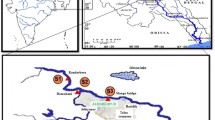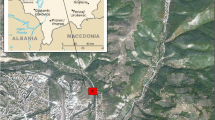Abstract
Background
The management of its available water resources has become a key issue for Iran. During the last few decades, the water quality of Siahroud River in the coastal plain of the Caspian Sea in Gilan Province in Northern Iran has significantly degraded. The scarcity of water has been compounded by rapid population growth and increasing pollution from fertilizers, pesticides, and municipal and industrial wastes. One of the sources of this degradation is the movement of heavy metals from the river's watershed into the various water systems supported by the river, including the water system for Rasht City.
Methods
To study the magnitude of heavy metal pollution in the Siahroud River, seven heavy metals including Zn, Cu, Pb, Cd, Mn, Fe, and Ni were measured in duplicate from replicated water samples collected over five consecutive seasons and analyzed by Atomic Absorption Spectrometry. In situ measurements of pH were taken with the samples and total organic carbon (TOC) was analyzed by IR gas measurement.
Results
The results demonstrated that four of the seven heavy metals including Pb, Fe, Cd, and Mn exceeded permissible safe levels as established by the United States Environmental Protection Agency. Multivariate factor analysis suggested that industrial land-use was the main contributing factor for the high levels of Fe and Mn in the Siahroud River, whereas, Cd was principly from agricultural activities in the watershed. The data also suggested that pH and TOC had an important role in the behaviour of Pb and Mn, and that the elevated levels of these two heavy metals in Siahroud River was the consequence of other anthropogenic sources. Only negligible levels of Zn, Cu and Ni were detected. Finally, all the sampling stations were subjected to cluster analysis. The results indicated that three different zones could be distinguished according to the levels of pollution. In addition, it was shown that the urban areas did not have a significant impact on the heavy metal pollution in the river. This observation stems from the fact that the data from the sampling stations before and after Rasht City were not significantly different.
Recommendation
. Preventive measures need to be undertaken in the land-use systems and watersheds of the Siahroud River to reduce the pollution levels of Pb, Cd, Mn and Fe.
Similar content being viewed by others
Author information
Authors and Affiliations
Corresponding authors
Rights and permissions
About this article
Cite this article
Charkhabi, A., Sakizadeh, M. & Rafiee, G. Seasonal Fluctuation in Heavy Metal Pollution in Iran´s Siahroud River - A Preliminary Study (7 pp). Env Sci Poll Res Int 12, 264–270 (2005). https://doi.org/10.1065/espr2005.06.270
Received:
Accepted:
Published:
Issue Date:
DOI: https://doi.org/10.1065/espr2005.06.270




